Leopold Godowsky
1870 - 1938
Leopold Godowsky was a Russian-born American virtuoso pianist, composer and teacher.
📖 "The piano as a medium for expression is a whole world by itself. No other instrument can fill or replace its own say in the world of emotion, sentiment, poetry, imagery and fancy."
Paris July 10th 1931
Quote by Leopold Godowsky
"What was Godowsky's method of teaching? As everybody knows, he was reported to be "a wizard of technique" (ein Hexenmeister der Technik, as he was dubbed unanimously by the German and indeed the world press). For this reason numerous young pianists from all over the world flocked to him, mainly in the hope of getting his recipe for attaining "virtuoso technique". Alas for them! Godowsky hardly ever said a word about technique in the sense in which these youngsters understood it; all his comments during a lesson were aimed exclusively at music, at correcting musical defects in a performance, at achieving maximum logic, accurate hearing, clarity, plasticity, through a scrupulous observance and a broad interpretation of the written score.
In his class, he valued above all the real musician and approached with obvious irony those pianists whose fingers were fast and agile while their brains were slow and dull (and there were several such in my time). He would immediately lose all interest in a pupil whose hearing was inaccurate, who memorized wrong notes or showed bad taste.
Heinrich Neuhaus on Leopold Godowsky in The Art of Piano Playing (1958), Chapter 1, The Artistic Image of a Musical Composition
🔔 Reload the page a few times if you see orange widgets instead of books and music.
Piano Music by Leopold Godowsky
Moto perpetuo, Grande valse romantique, Valse-scherzo, Märchen, Polonaise (1888–9)
3 concert studies, op.11 (1899
Sarabande, Menuet, Courante, op.12 (1899)
Toccata, G♭, op.13 (1899) [rev. of Moto perpetuo (1889)]
Piano pieces, opp.14, 15, 16 (1899)
Sonata, e (1911)
Walzermasken, 24 Tonfantasien im Dreivierteltakt für Klavier (1912)
46 miniatures, pf 4 hands (1918)
Triakontameron, 30 moods and scenes in triple measure (1920)
Java Suite (1925)
4 poems (1927–32)
Passacaglia (1928)
Prelude and Fugue, pf LH (1930)
Waltz poems, pf LH (1930)
Méditation, Etude macabre, Impromptu, Intermezzo, Elegy, Capriccio, pf LH (1930–31) [also versions for two hands]
Transcriptions, Paraphrases and Arrangements by Leopold Godowsky
Renaissance, transcrs of works by Rameau and others (1906–9)
Tango (Albéniz), D (1921)
Triana (Albéniz) (1938)
3 sonatas for solo vn (J.S. Bach), g, b, a; 3 suites for solo vc (J.S. Bach), d, C, c (1924)
Adagietto from L'Arlésienne (Bizet) (1927)
Arrangement de Concert du rondo, op.16 (Chopin) (1899)
Paraphrase de Concert, Valse, op.18 (Chopin) (1899)
53 studies on the Chopin études (1894–1914)
5 concert arrangements of Chopin waltzes (1921–7)
Canzonetta from Violin Concerto Romantique (Godard) (1927)
Etude (Henselt), F♯ op.2 no.6 (1899, rev. 1931)
Le cygne (Saint-Saëns) (1927)
Ballet music from Rosamunde (Schubert) (1923)
Moment musical, op.94 no.3 (Schubert) (1927)
12 Songs (Schubert) (1927)
3 Symphonische Metamorphosen Johann Strauss'scher Themen (1912)
Symphonic Metamorphosis of the Schatz-Walzer themes from J. Strauss's Der Zigeunerbaron, pf LH (1941)
Ständchen, op.17 no.2 (R. Strauss) (1922)
Perpetuum mobile (Weber) (1903)
Momento capriccioso, op.12 (Weber) (1904)
Aufforderung zum Tanz (Weber), 2 pf (1905, rev. 1922)
Homepage Piano Lessons London | Tuition Elements | Piano Composers A-Z
 Piano Lessons in London | Natalia Loresch | Tel. 07454766539
Piano Lessons in London | Natalia Loresch | Tel. 07454766539